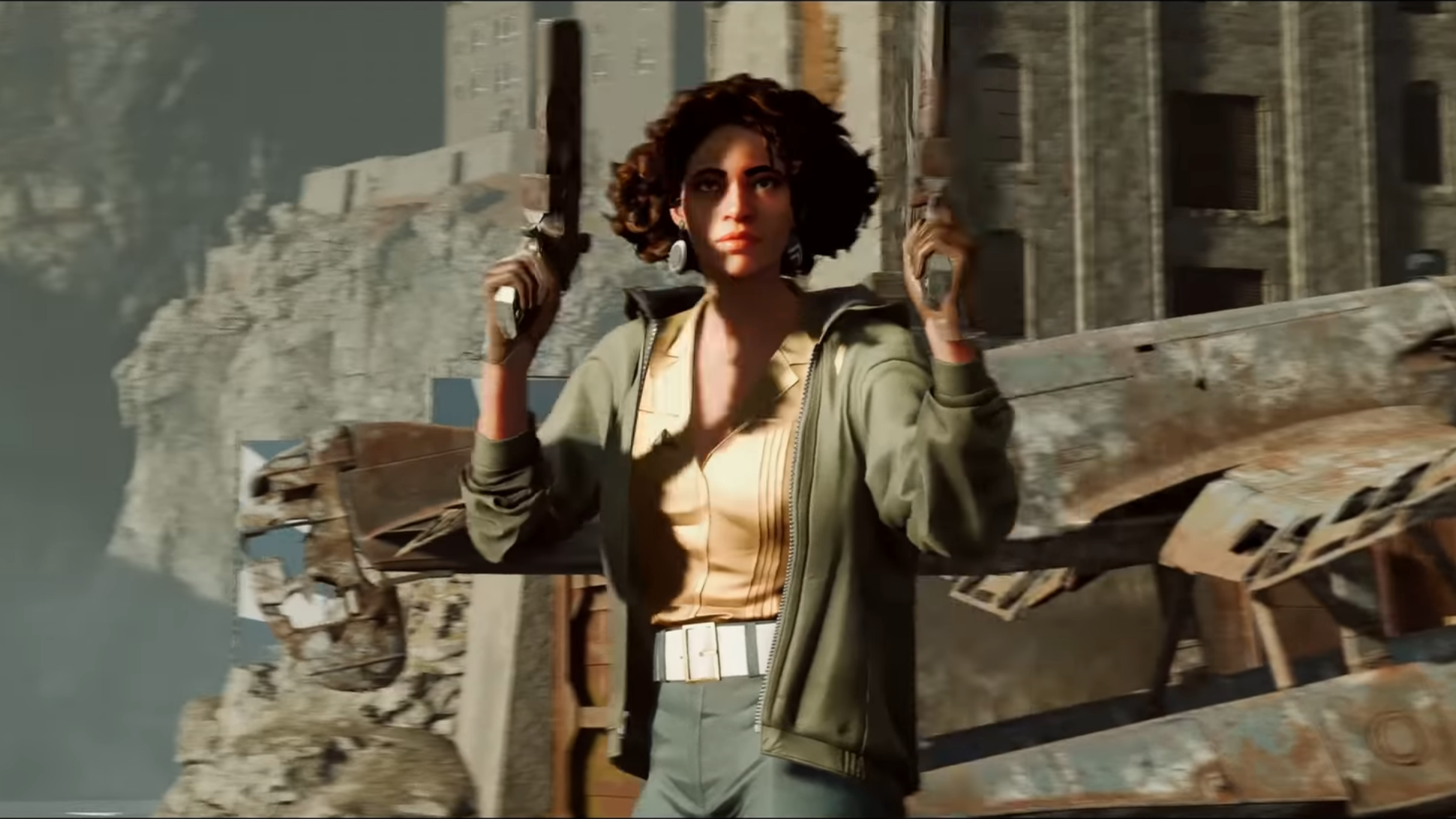How Deathloop defies the immersive sim's reliance on quick save
You're encouraged to save often in Dishonored and Prey, but it's not an option in Deathloop.

Deathloop is unmistakably an Arkane Studios immersive sim in the mold of Dishonored and Prey, but it's making some pretty dramatic changes to the format. The most notable is that the world is locked in an unbreakable day-long loop, and if protagonist Colt dies, he's thrown back to the start.
Some players are understandably terrified by this: is Deathloop, god forbid, a roguelike? Will beating it require bashing one's skull against difficult tasks until they 'get gud'? Well, no. The things that seem scary about Deathloop—the loop, and no quick save—are actually there to encourage more experimentation and exploration, says game director Dinga Bakaba, as the player figures out how to assassinate all eight of their targets in a single day.
"So the way it works is like this," Bakaba starts. "You have four districts that are in practice four discrete levels, big Arkane levels. Each of them has four time periods: the morning version, the noon version, the afternoon and the night. Basically, when you choose to enter one of the districts you can take your time, you can do it fast, whatever, but the thing is when you exit the district and come back to the menu, time advances to the next period."
"We make you care about the moment-to-moment, but at the same time, very quickly, you start to forget about the consequences."
So Deathloop won't have you on a strict timer: just like in Dishonored you can explore each region as slowly as you like. The structure of the game is kind of like a turn-based game. "So this is kind of the idea: each period [morning, noon, afternoon, night] is a turn, like it's turn-based, and every four turns the world resets, except your knowledge," Bakaba says. At some point in the game you'll receive a power called Residuum which lets you keep weapons and items across loops.

"It's important because the structure of the game is not an exercise in challenging you to get to the end of the day," Bakaba explains. "You can do that, but in practice you can just skip those periods. You can enter a district, take a pick up, then exit it. You don't have to even kill anyone to get to the end of the day. Getting to the end of the day is just a rhythm thing, it gives a rhythm to the experience but it's not a goal in itself. The goal is to learn what's happening and then do some actions that can break the time loop."
The player will likely fear the loop at the beginning of the game, because the end of it (or death) implies a lack of progress, or forward momentum. "But quickly you get the feeling that time is now your plaything," Bakaba says. "It's on your side. You start to understand how it works, and you'll use this time loop to be where you need to be, when you need to be."
The structure of Deathloop addresses one of the bugbears of the immersive sim: quick save. It's there in Dishonored, so you're meant to use it, but it also means you're less likely to see how sticky situations play out; it means you're less likely to be forced to improvise, to really experiment with the game's systems. But Deathloop eliminates quick saves entirely: You're meant to play through disasters, you're meant to see the outcome of poorly hatched plans.
Keep up to date with the most important stories and the best deals, as picked by the PC Gamer team.
"We always say our games are better when you go with the flow, when you roll with your mistakes and improvise solutions to those problems," Bakaba says. "And then, even though we say that, we all play those games using quick save too. Even though I say that this is the best way to play, every now and then my ego won't take it and I will reload."
In Deathloop everything matters, but at the same time, nothing matters. Everything matters, because you can't quick save. Nothing matters, because time loops anyway. No opportunity is lost. If you find an area that's interesting, but want to focus on a different task, you can come back later. It's not like in Dishonored, where players might be inclined to linger in an area long after they've lost interest for the sake of completionism or fear of missing out. "That's the paradox," Bakaba says. "We make you care about the moment-to-moment, but at the same time, very quickly, you start to forget about the consequences."
Arkane level designer Dana Nightingale said on Twitter in July that Deathloop is "a little like Bloodborne," but she probably wasn't referencing that game's notorious difficulty. Bloodborne and the Dark Souls games liberate the player from the tyranny of the quick save, simultaneously raising the stakes and encouraging living in the moment. Just like Deathloop.
"We really wanted the player to get this feeling of mastery that we see watching Groundhog Day or Palm Springs," Bakaba says. "We get that feeling that the protagonists are the masters of this day, of this period. We wanted to give you a feeling of that."
The Deathloop release date is September 14, when it'll hit Steam and the Bethesda store.

Shaun Prescott is the Australian editor of PC Gamer. With over ten years experience covering the games industry, his work has appeared on GamesRadar+, TechRadar, The Guardian, PLAY Magazine, the Sydney Morning Herald, and more. Specific interests include indie games, obscure Metroidvanias, speedrunning, experimental games and FPSs. He thinks Lulu by Metallica and Lou Reed is an all-time classic that will receive its due critical reappraisal one day.

